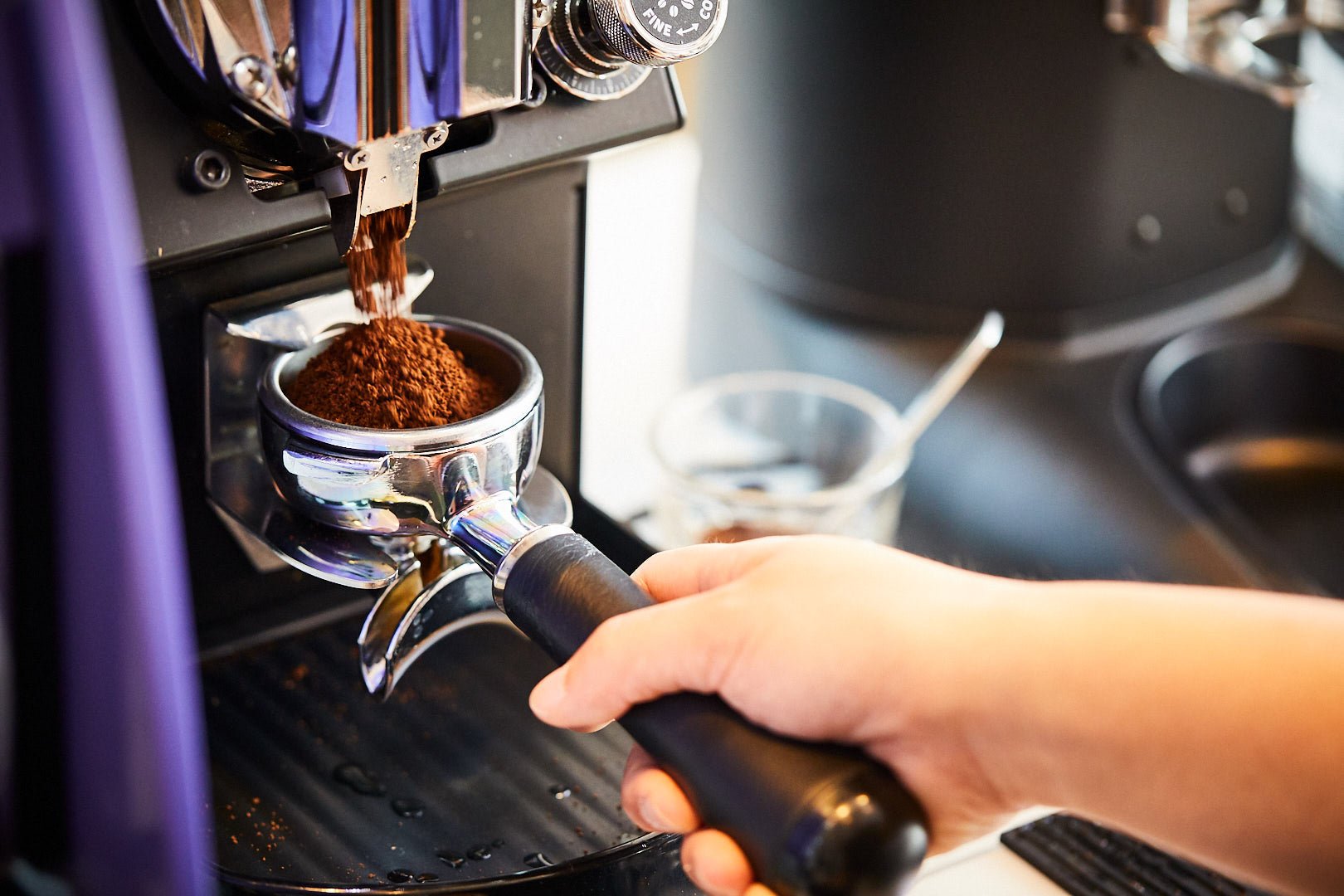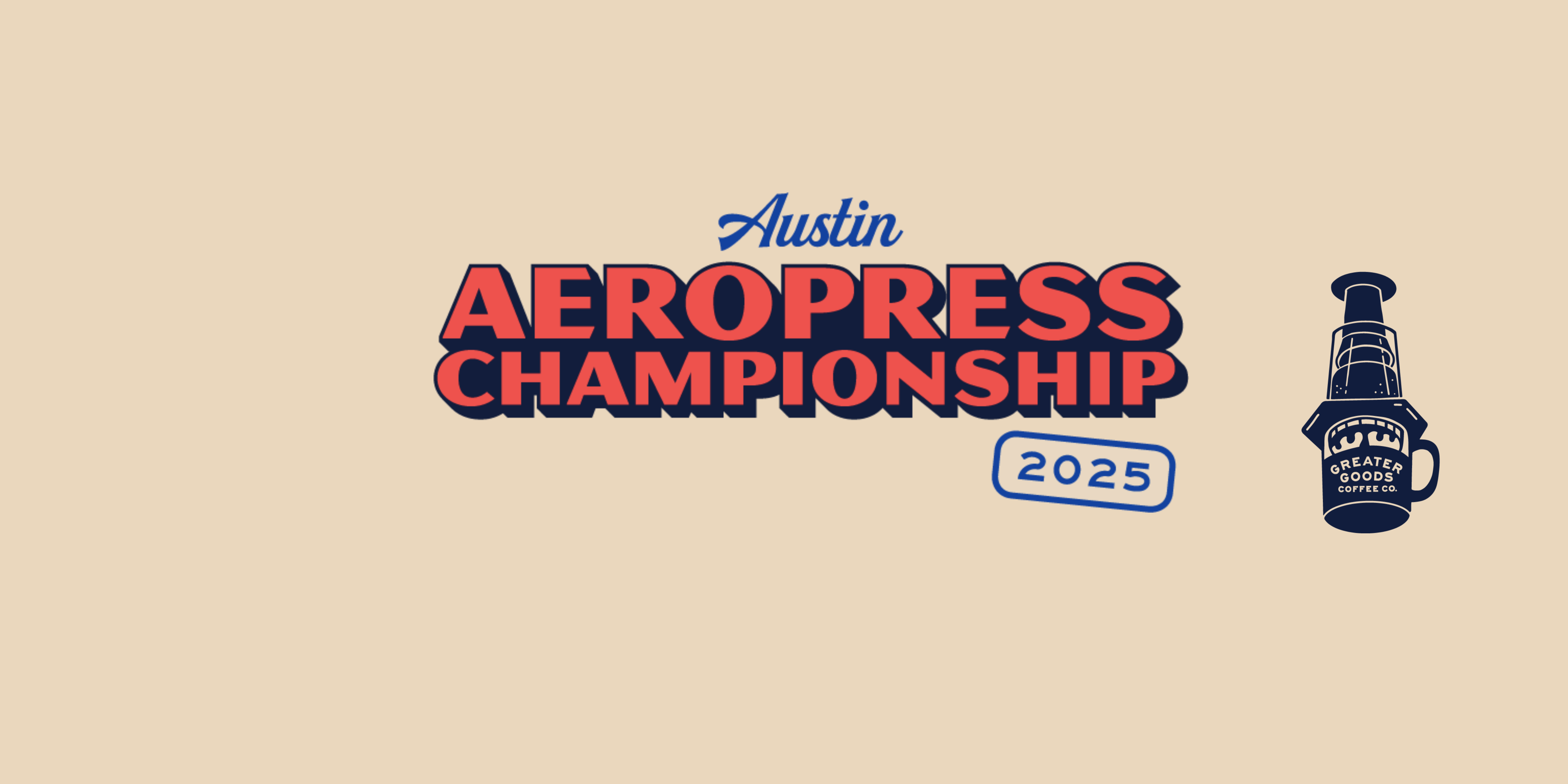Our Philosophy
Take a stroll down the coffee aisle at any major grocery store, and you’ll see a diverse lineup of blends - espresso blends, cold brew blends, house blends, and breakfast blends, most, if not all, promising smooth, sweet, and simple coffee flavor.
“It’s coffee that tastes like coffee,” we often say. So why do we offer six different blends?
For Greater Goods, blends are how we get creative in the coffee kitchen. Not all specialty coffees taste the same, and through blending, we can pair the fruitier flavors of one with the boldness of another to create the unique chocolate-covered cherry explosion that is our Pick-Me-Up house blend, for example. It’s like a pinch of salt on a chocolate chip cookie, a chef's choice in the name of delicious synergy.
It’s a common misconception that blends are synonymous with low-quality coffee. They’re often cheaper than their single-origin counterparts and are usually roasted darker to tone down acidity and elevate sweetness and body. While it is true that our blend components are less costly, they are still specialty coffees, meaning they pass a rigorous set of tests to ensure quality and a cup score of at least 80 points. Coffees with more complexity (i.e., floral, fruit notes) typically score higher, and higher-scoring coffees cost more to buy (but aren’t everybody’s thing).
So if the commodity price per pound of green coffee is $1.59 (at the time of writing), we might pay around $3.50 for a blend component and upwards of $6.00 for a limited-time offering.
These days, more and more roasters like us are dreaming up an excellent roster of blends, pairing unique origins and flavors at more accessible price points and appealing to a wider audience of coffee lovers in the process. While we always appreciate the beauty of a well-produced, well-roasted single-origin coffee, today we’re writing a love letter to the blend.
Single-origin vs. blend: What’s the difference?
A blend is a mixture of different beans from two or more geographical regions, sourced and roasted with a specific mood, brew method, and/or flavor profile in mind. Single-origin coffees are sourced from one origin (like Guji, Ethiopia) or producer (like the Solis brothers) and roasted (usually lightly) to showcase the unique qualities of that specific region, variety of coffee plant, and/or processing method. Neither is necessarily better; it all depends on what you’re looking for.
In short, the flavor of a single origin can be easily traced back to the producer. The flavor of a blend has more to do with the roaster. Single origins are typically more complex (layered fruit notes, florals, and sweetness). Blends are typically more basic (smooth, chocolaty, coffee-coffee). In both cases, because we value transparency, we can trace back the origin, variety, and producer(s) of each lot and ensure every member of the supply chain is paid fairly in the process.
How do we blend?
To decide on a blend’s components, we must first understand its purpose. Take Kickstart, for example. When designing our best-selling espresso blend, we wanted a full-bodied, dark chocolate flavor that would pair well with milk. So, we laid a heavy foundation with a bold and very soluble Brazilian bean. Then, we provided nuance and complexity with lesser potions of other components from Central and South America, leaving some wiggle room on the exact origin so we could order our ingredients with the seasons. That’s the beauty of a blend!
Regardless of those other two components, we roast Kickstart in such a way as to bring out a brown sugar sweetness and a subtle dried fruit note. The result is an easy-to-dial-in espresso blend that is consistently sweet and balanced at a 1:2 ratio in 25-35 seconds.
For seasonal blends like our upcoming holiday blend, we’ll build small samples of different ratios and components side-by-side, then taste them in a blind cupping. Then we decide, a team, which blend tastes the best for its purpose.
“Which of these blends tastes the most balanced and the most like the holidays?” is the prompt.
“The 60/30/10 split of the Colombia/Kenya/Uganda” is the answer (this is just an example - our official holiday blend doesn’t drop for a couple more months).

How to brew blends
When brewing blends, we recommend a lower water temperature (around 195-198F) and a stronger brewing ratio (1:15) to promote sweetness, balance, and a full-bodied experience. No matter what brew method you choose, our blends are guaranteed to be smooth sippers.
For espresso, we recommend a traditional 1:2 ratio for Kickstart and something a bit stronger (1:1.5) for Stimulate, a darker, more traditional Italian-style espresso blend. These coffees also fare well in a moka pot, Turkish coffee, and/or percolation methods.
When it comes to cold brewing, Connection is your best bet. It’s a low-acidity blend of Colombian and Brazilian coffees, best brewed as a concentrate and diluted with water or milk to your preferred strength. Pick-Me-Up and A.M. Rescue are our favorites on the automatic drip and Chemex, respectively.
Conclusion
A blend is a thoughtfully curated combination of two or more beans roasted to suit a specific flavor profile and/or brew method. Blends are a great starting point for folks new to specialty coffee. They pair well with cream and sugar, are easy to brew, and are total crowd-pleasers.
We pride ourselves on our commitment to transparency and sustainability, so whether you’re going for a Pick-Me-Up blend or ready to take home a single-origin Costa Rica, you can rest assured the farmers responsible for that coffee were fairly compensated for their efforts. We believe there’s a time and place for every coffee - so think about what you want, then browse our offerings to find something that fits the bill. Or start a Roaster’s Choice subscription and let us do the heavy lifting of deciding!





